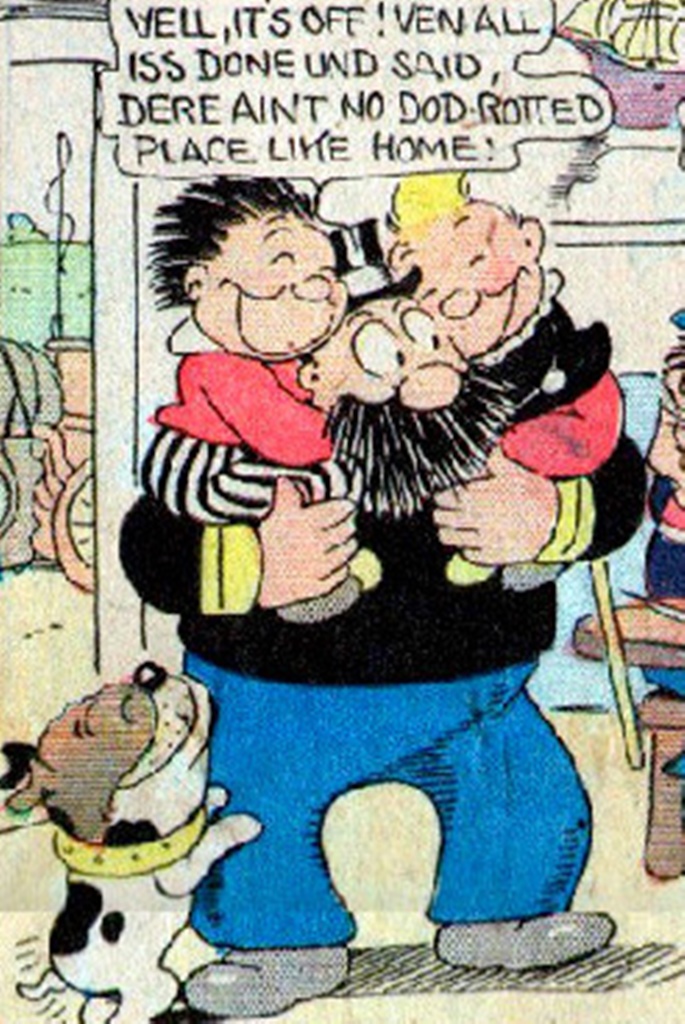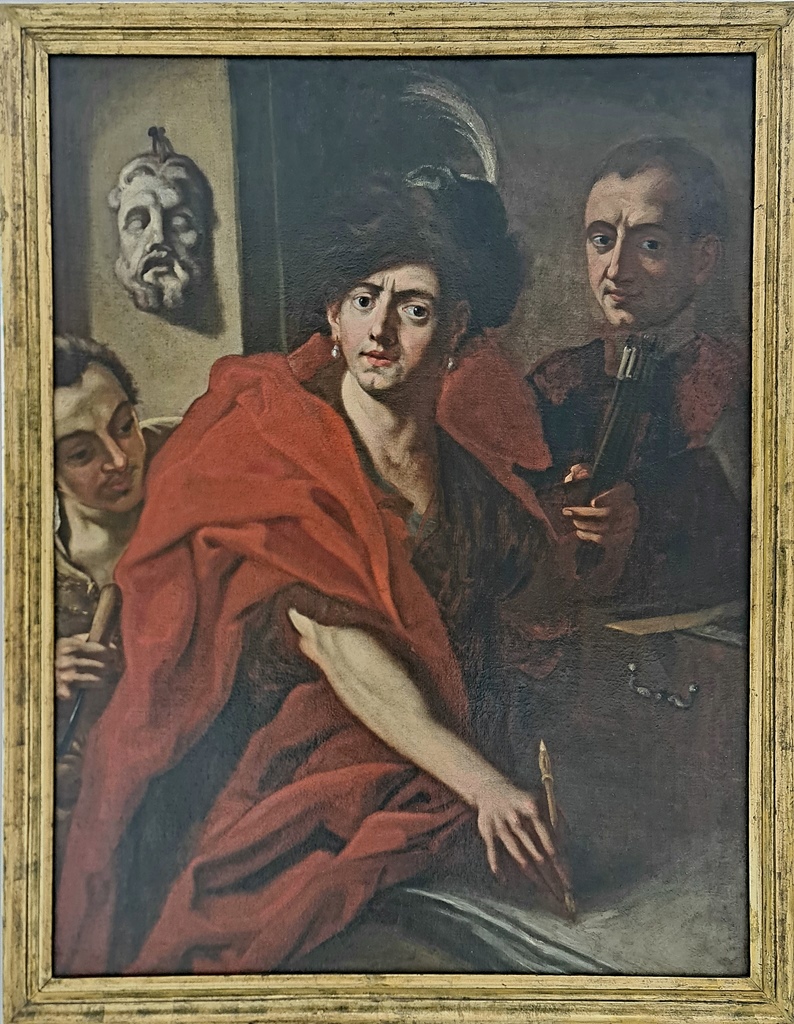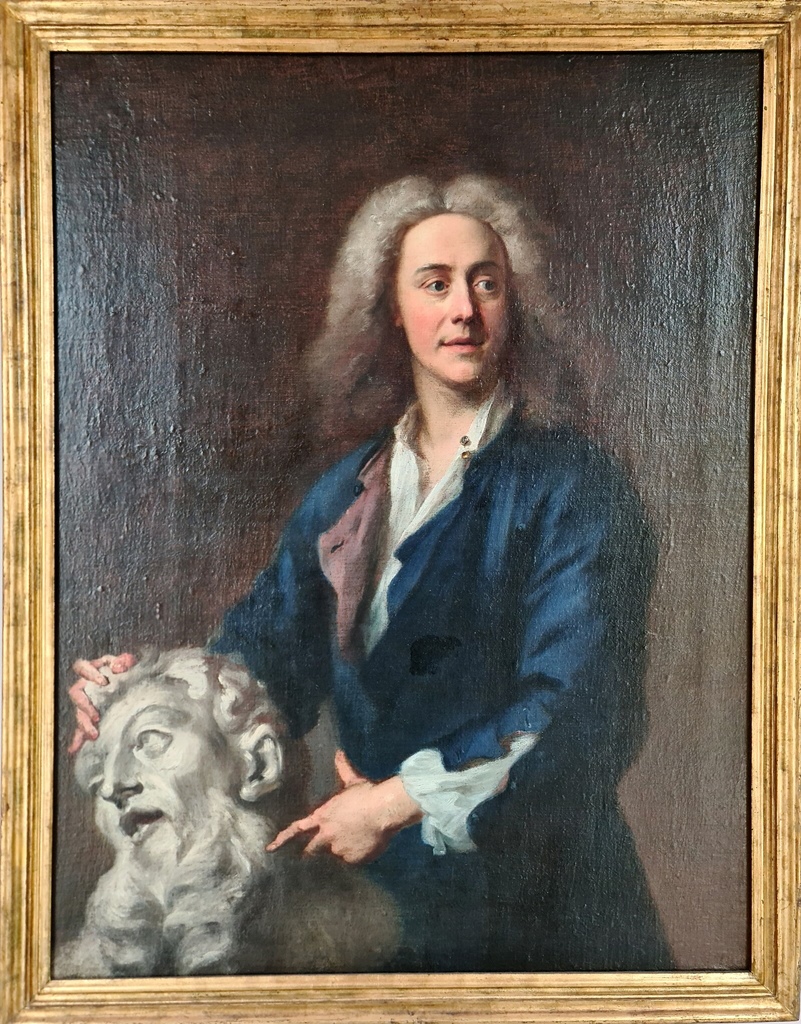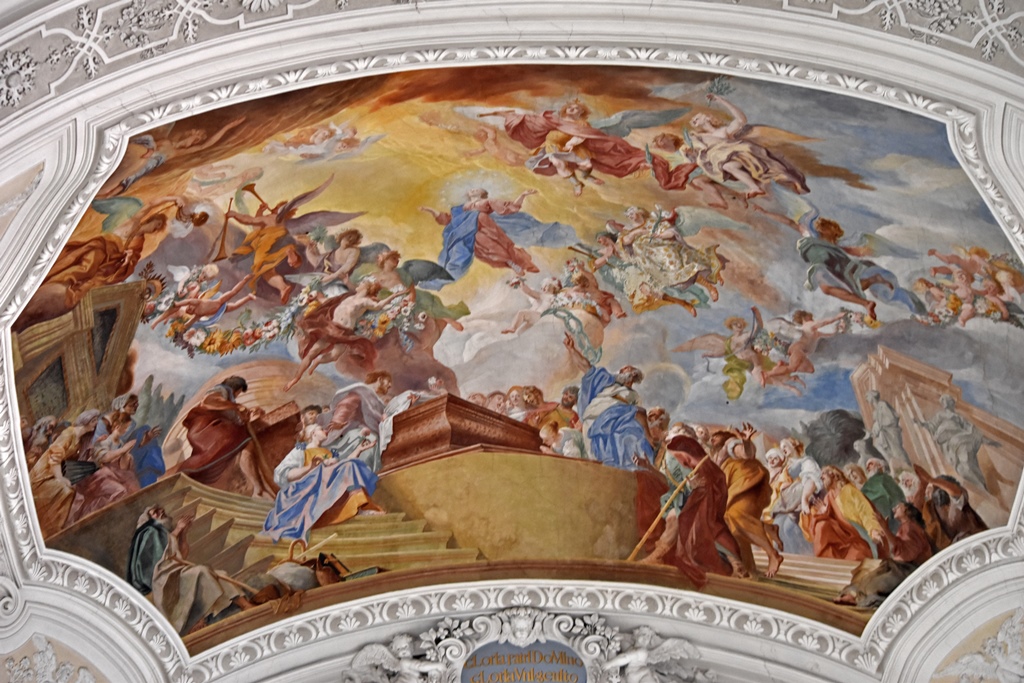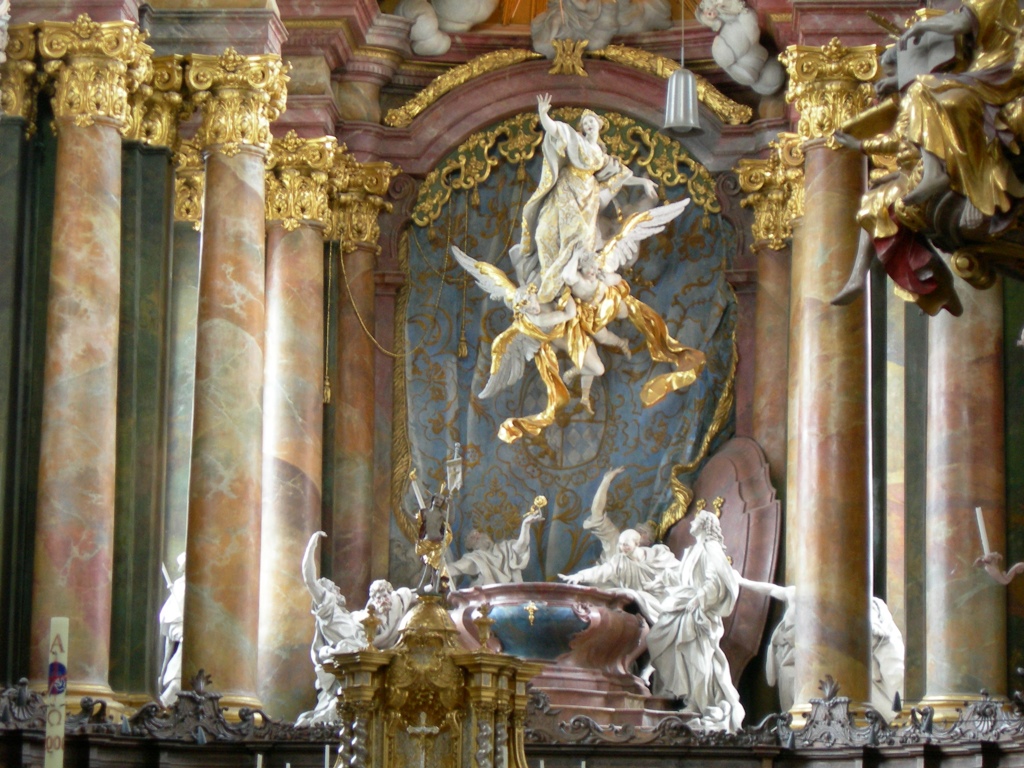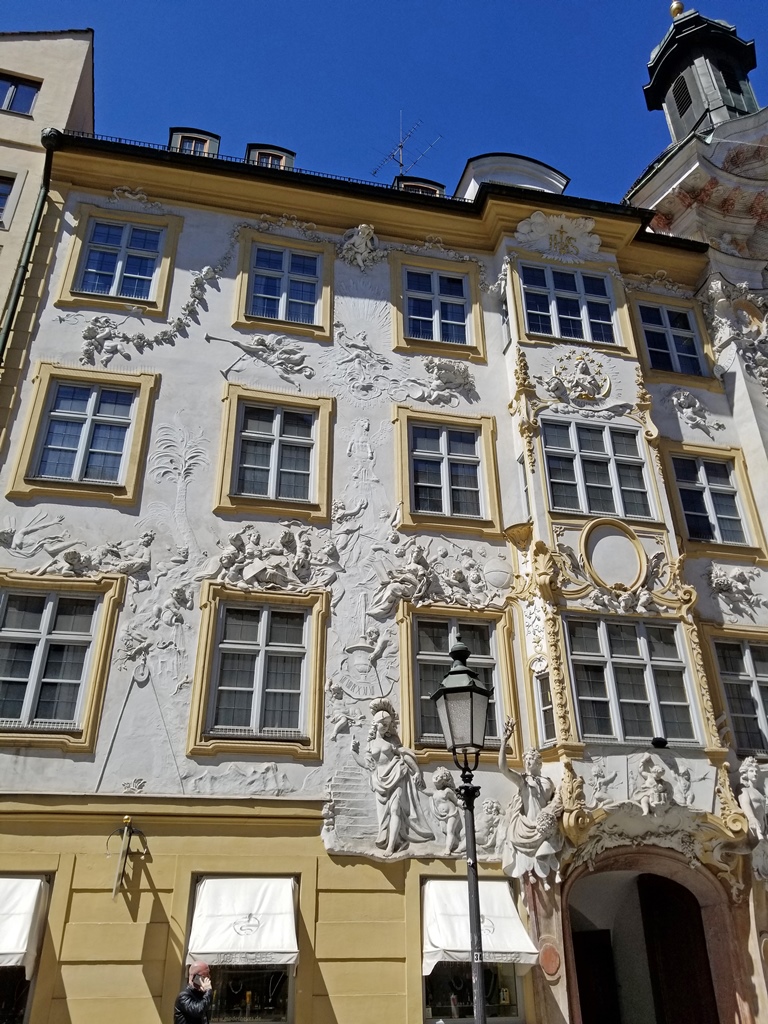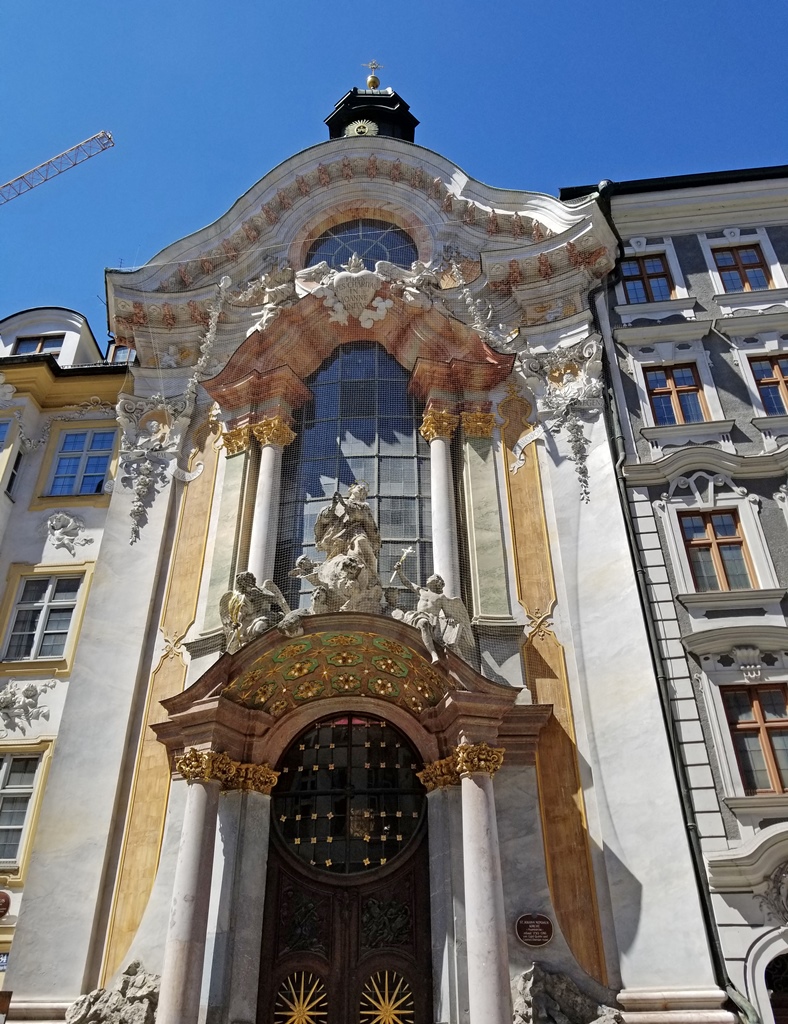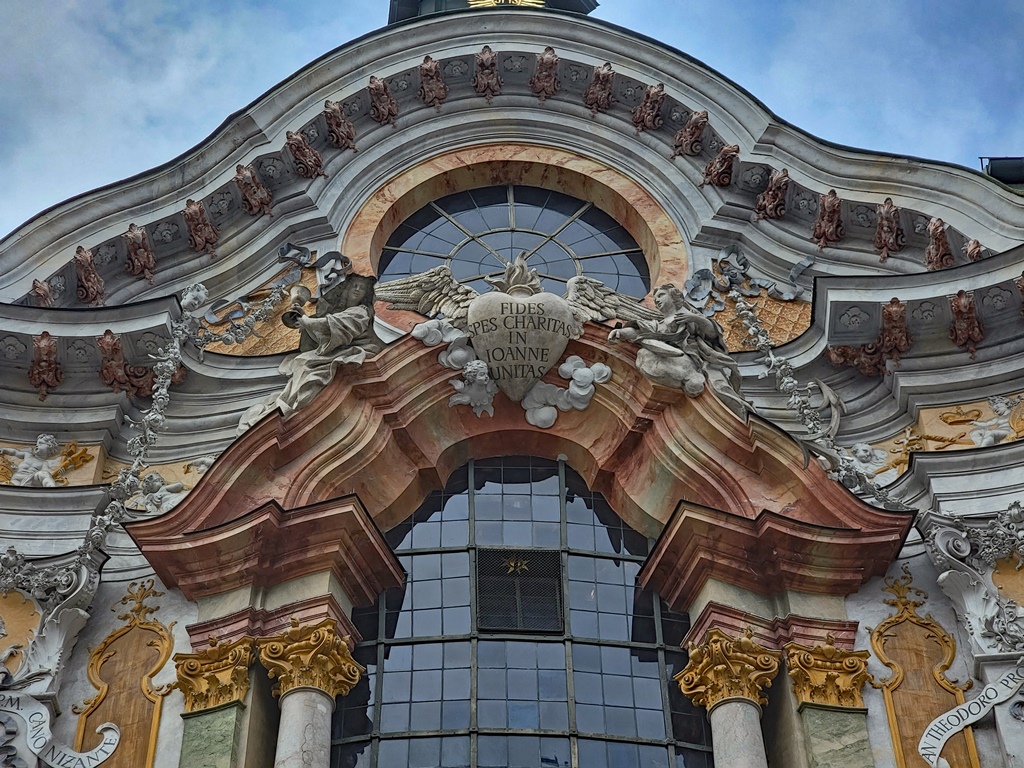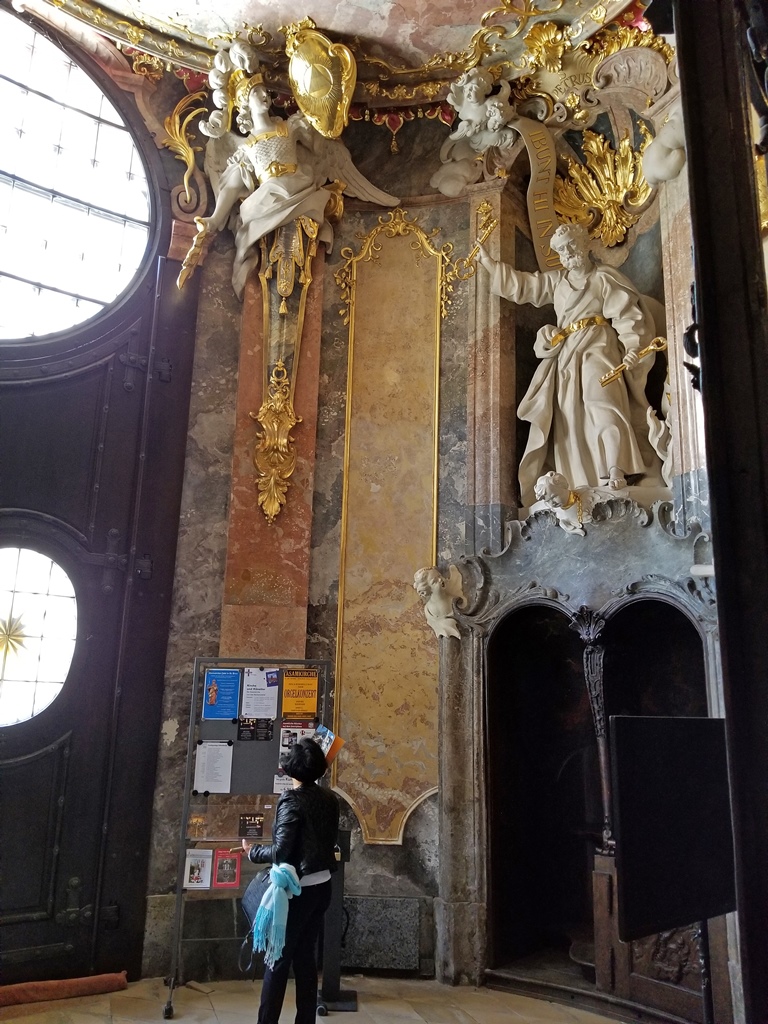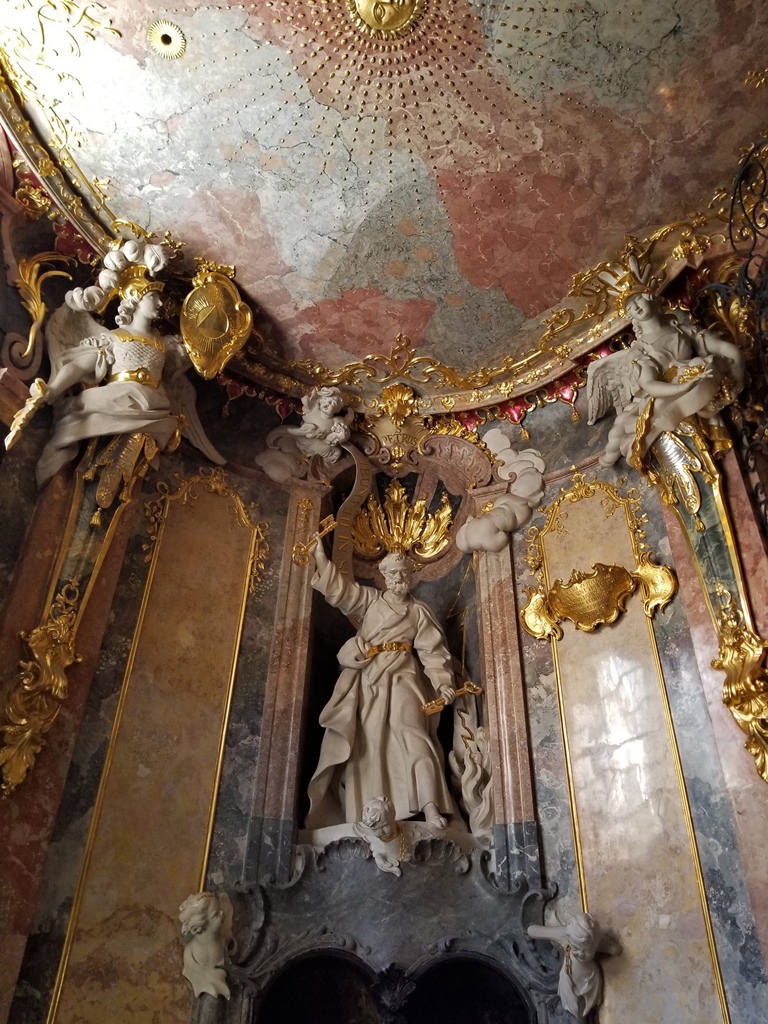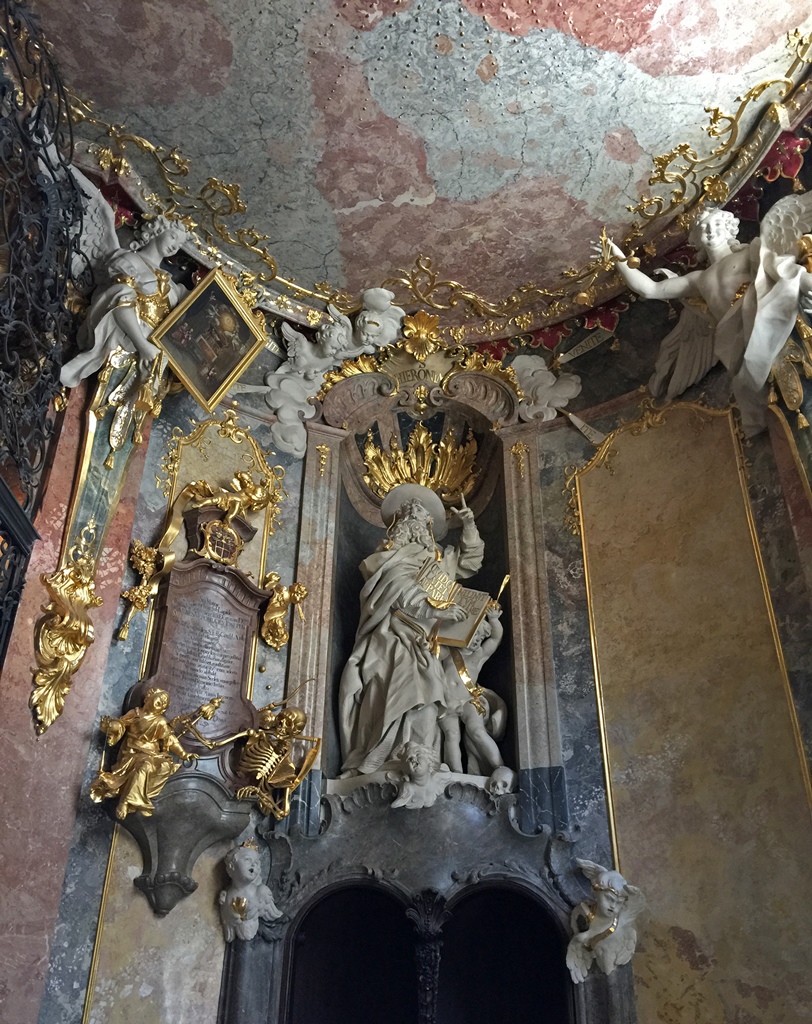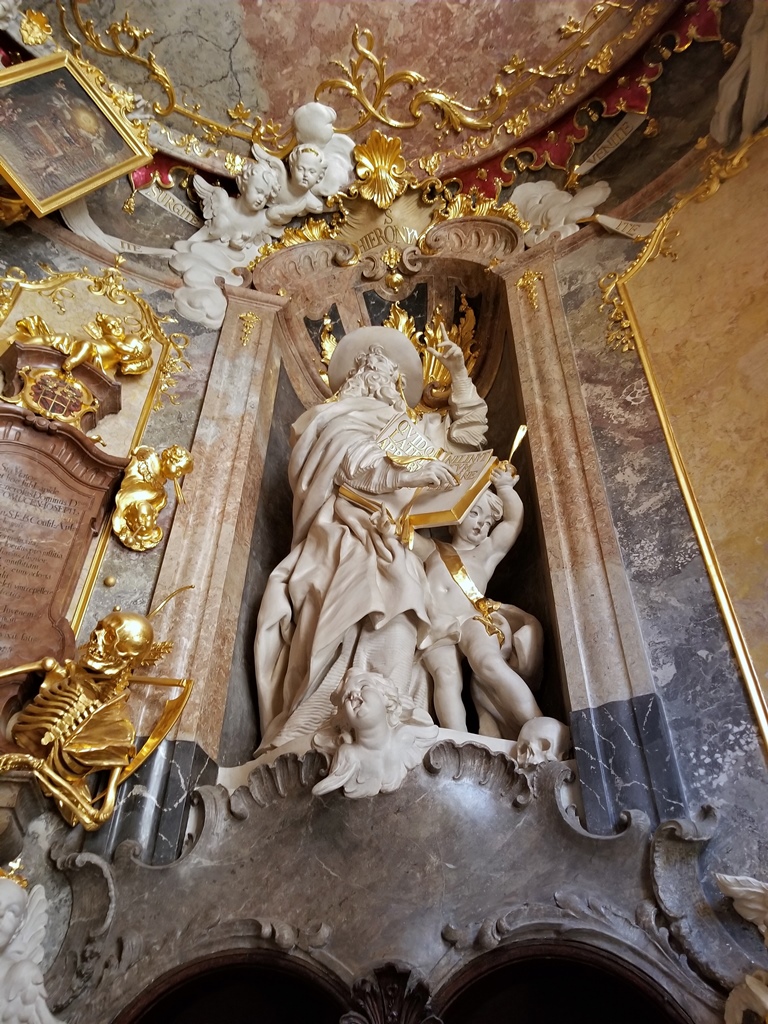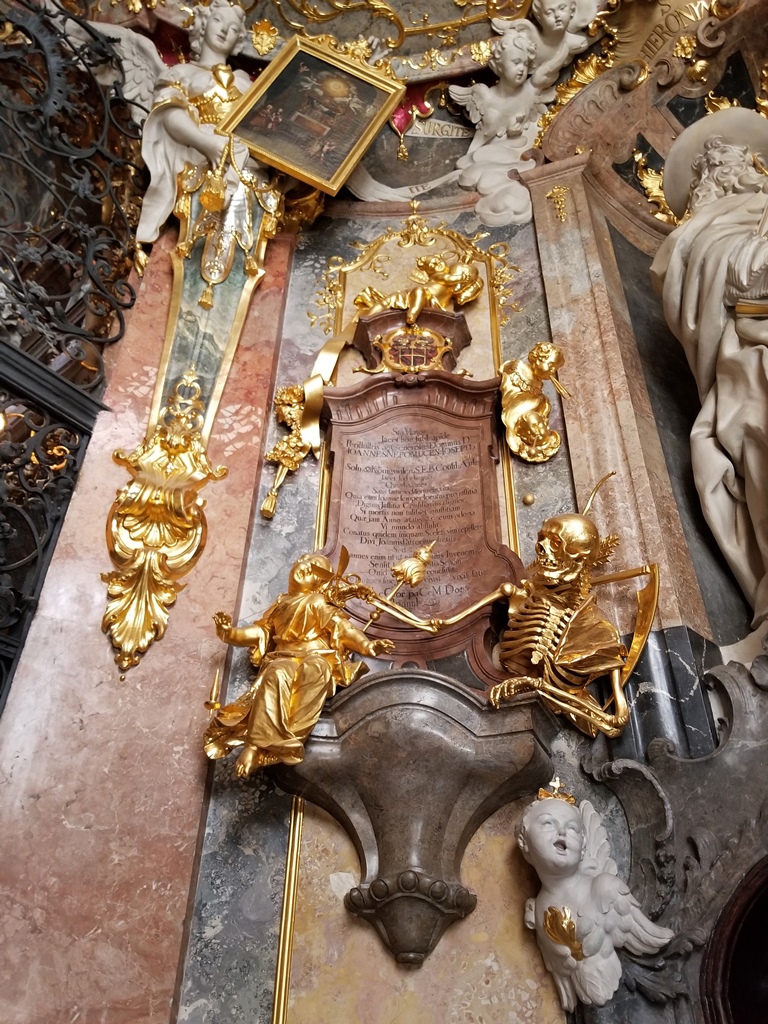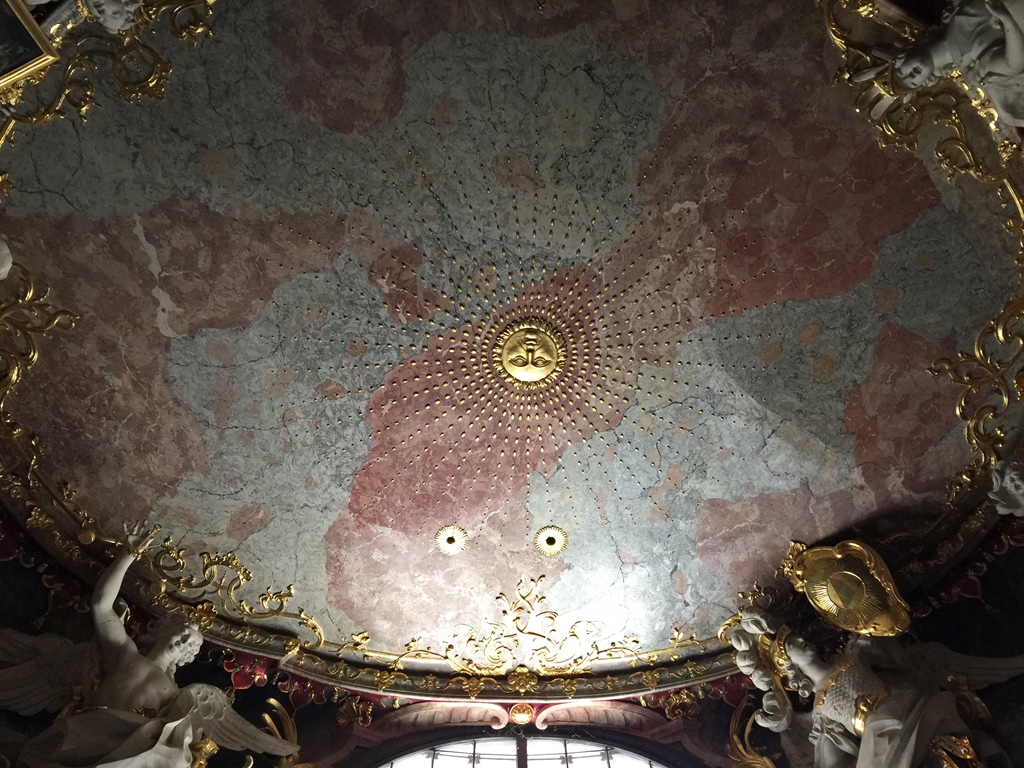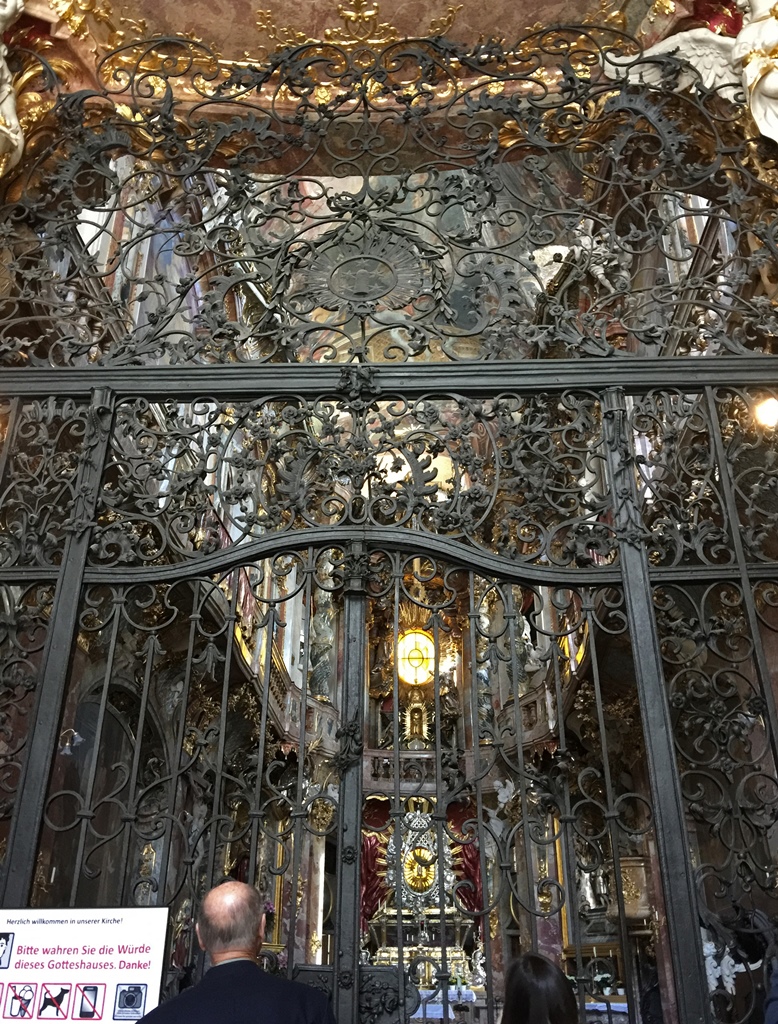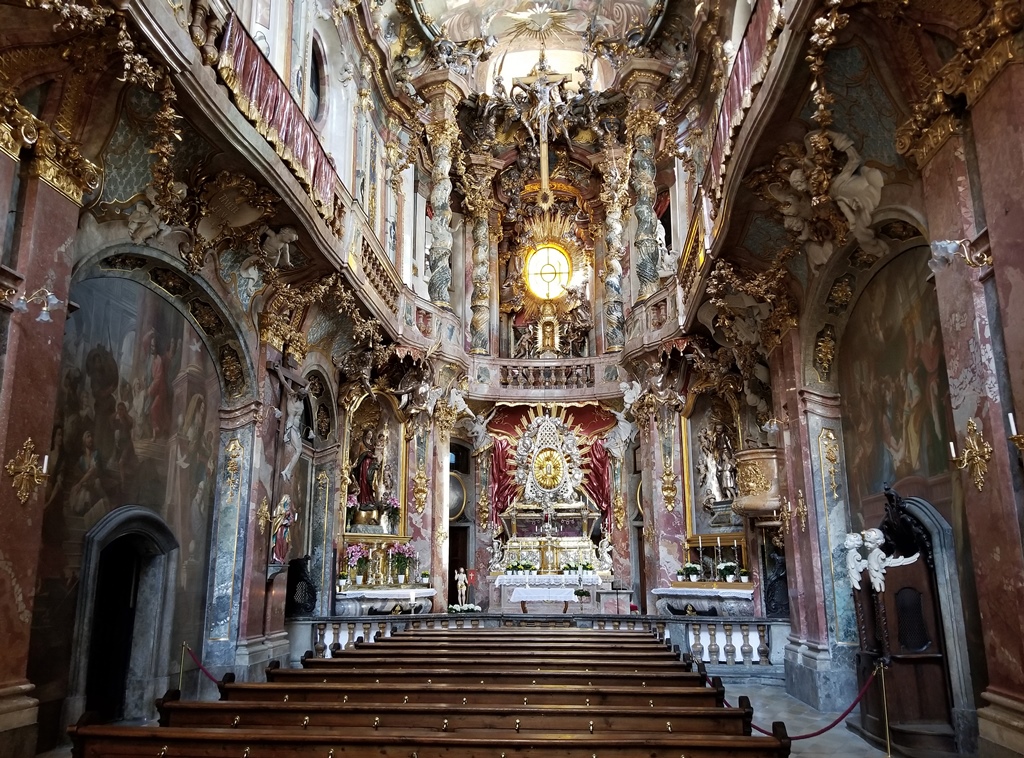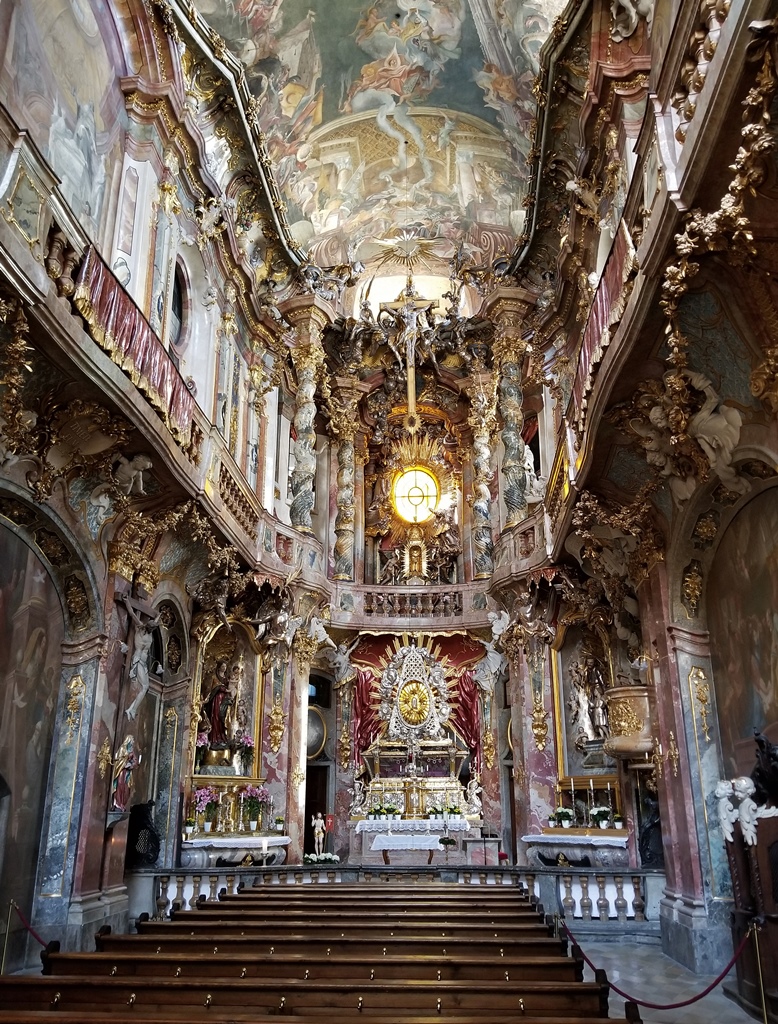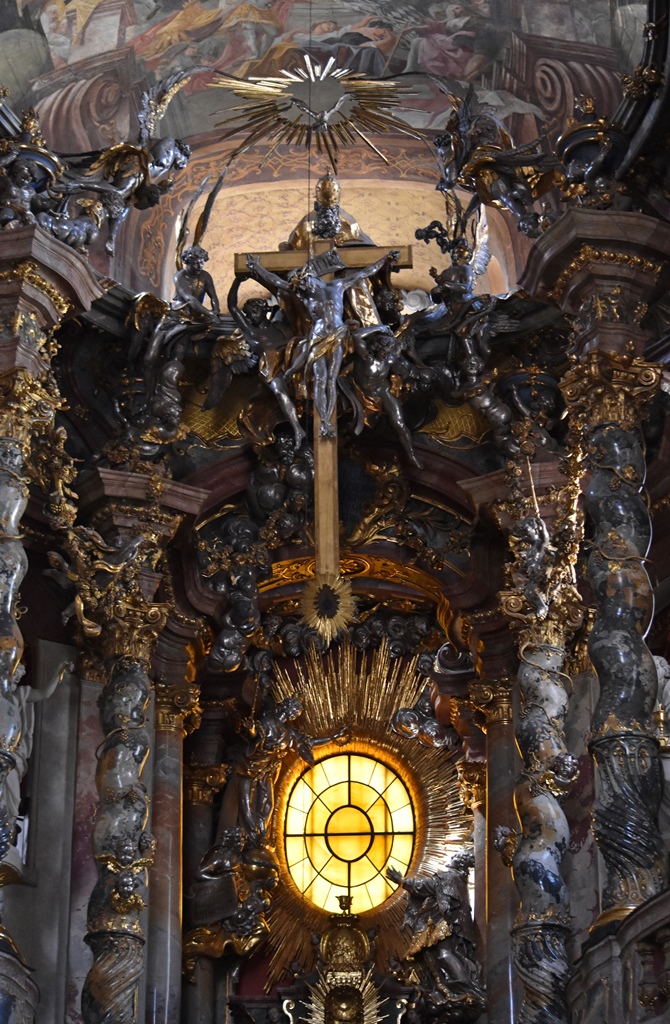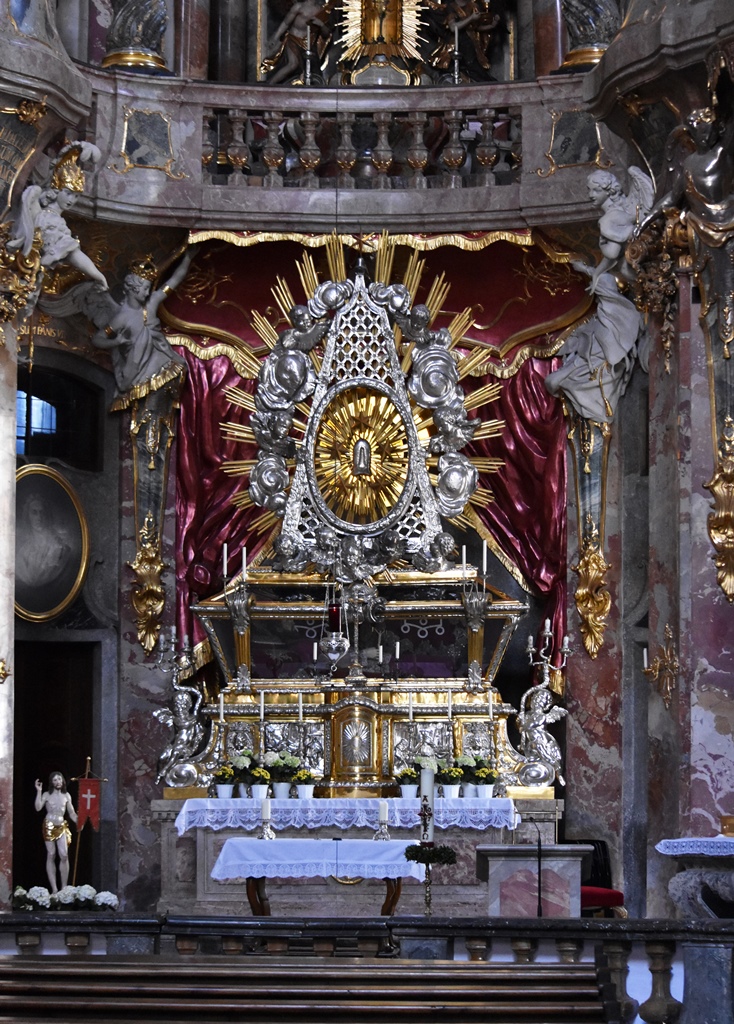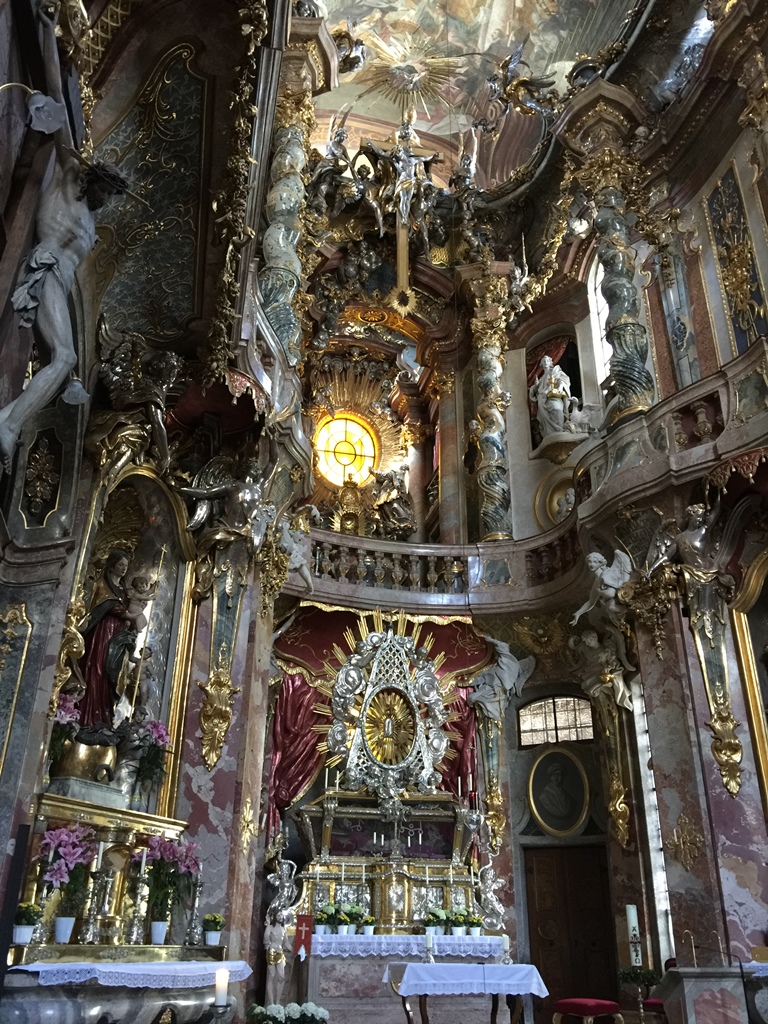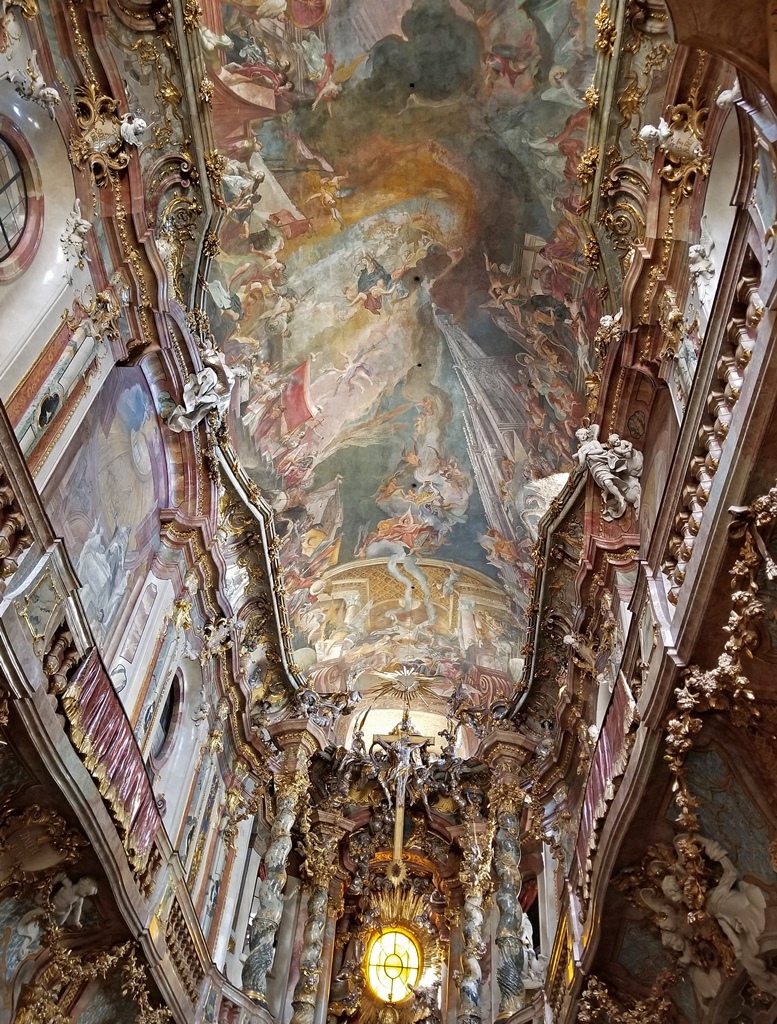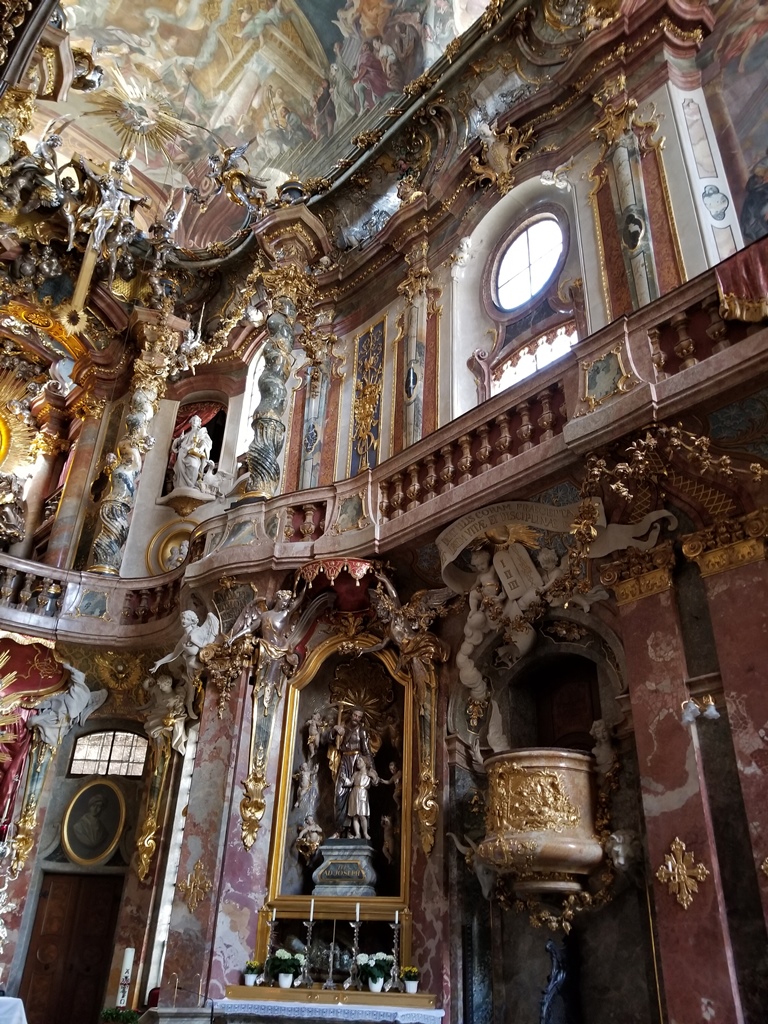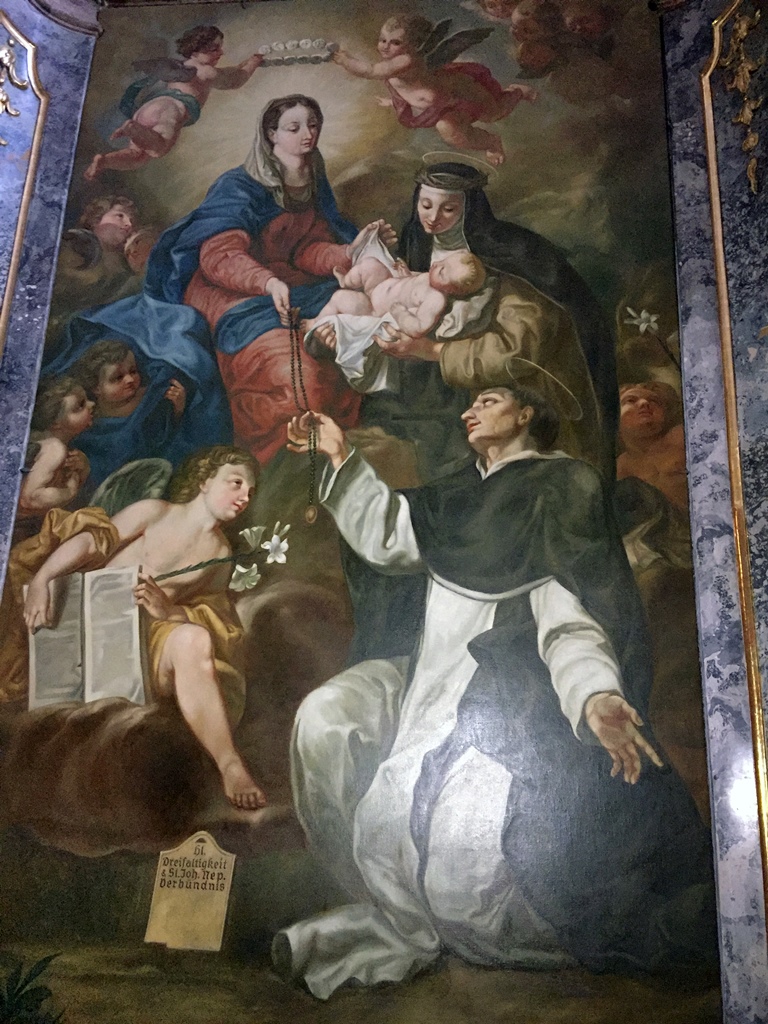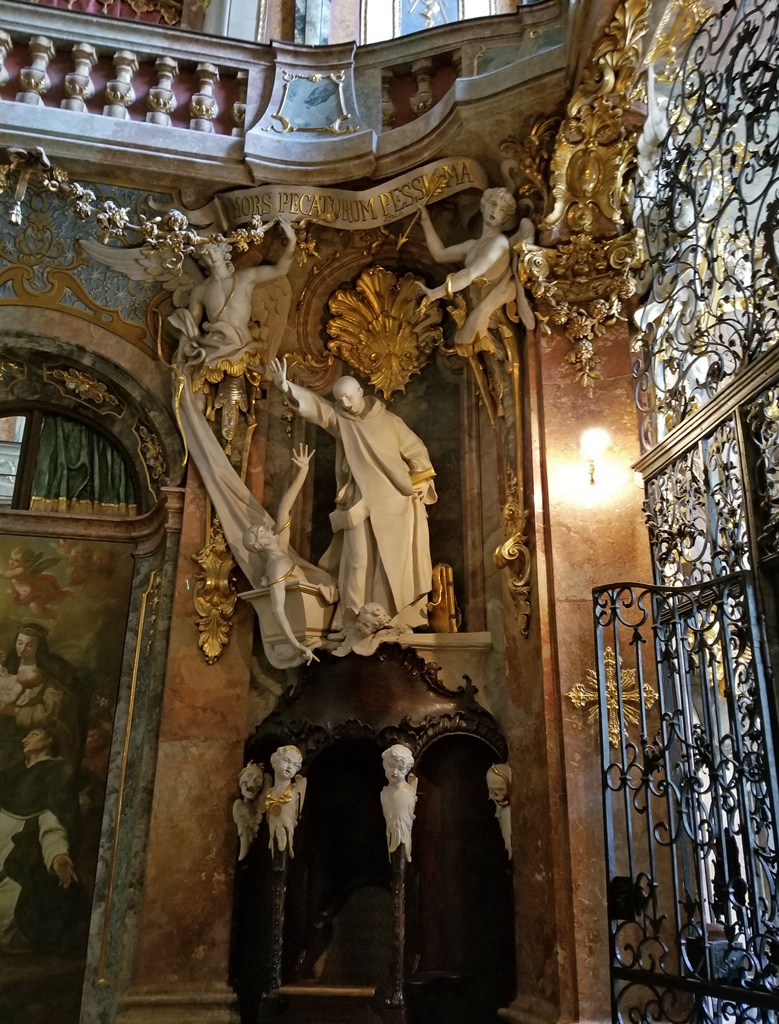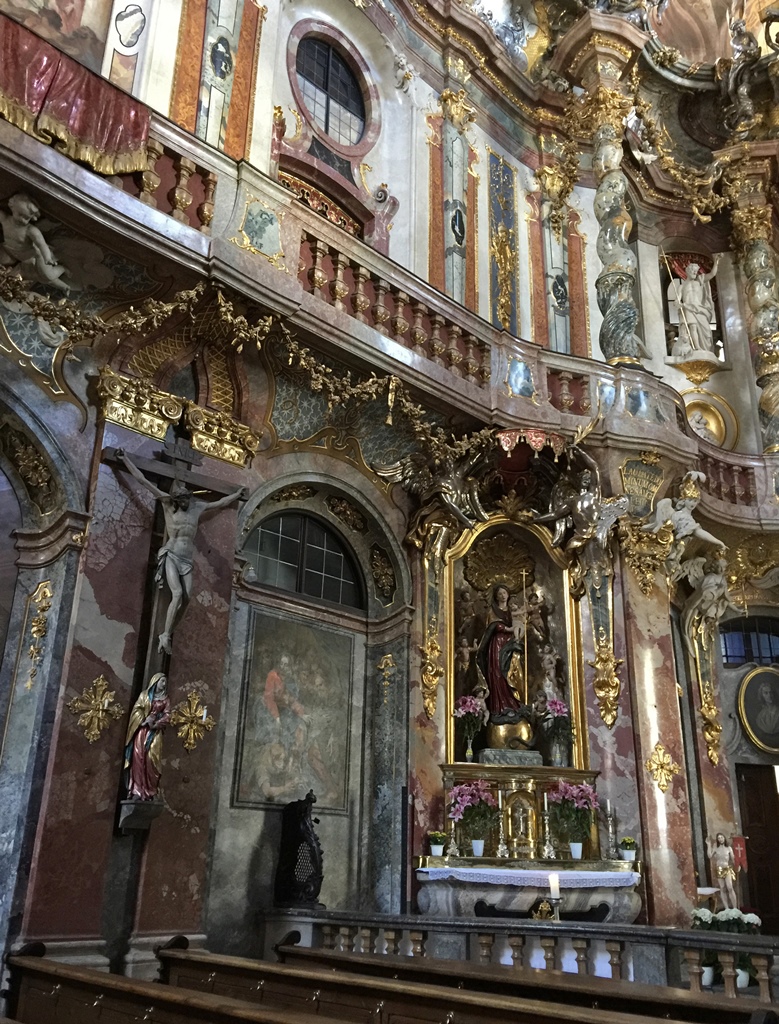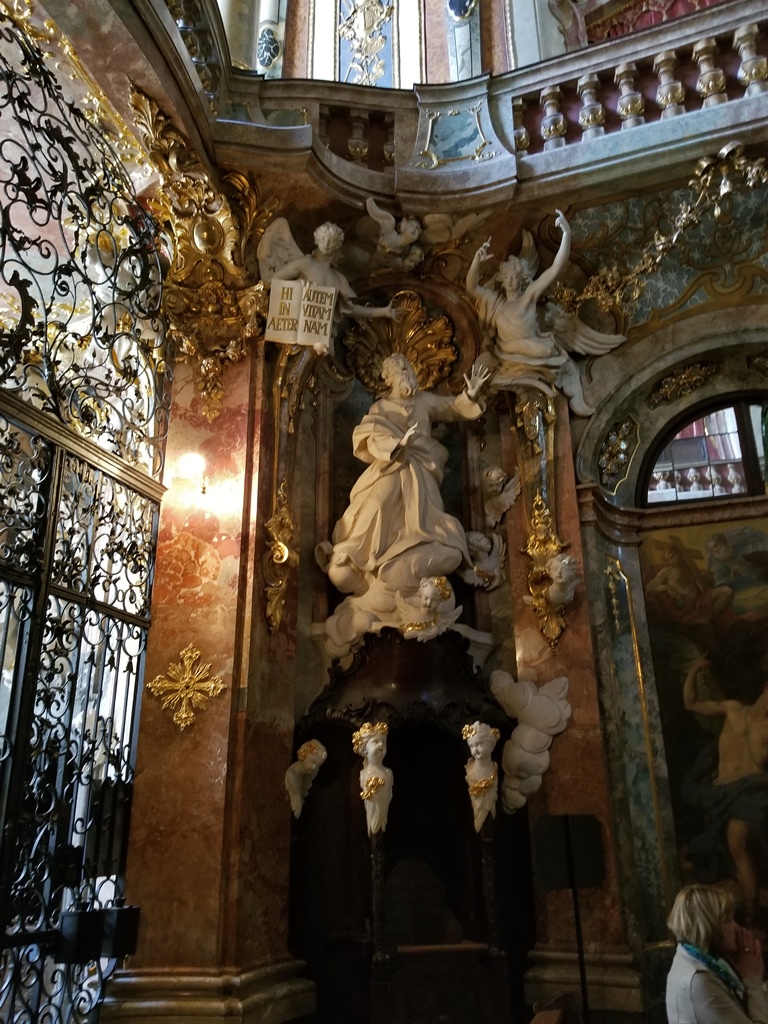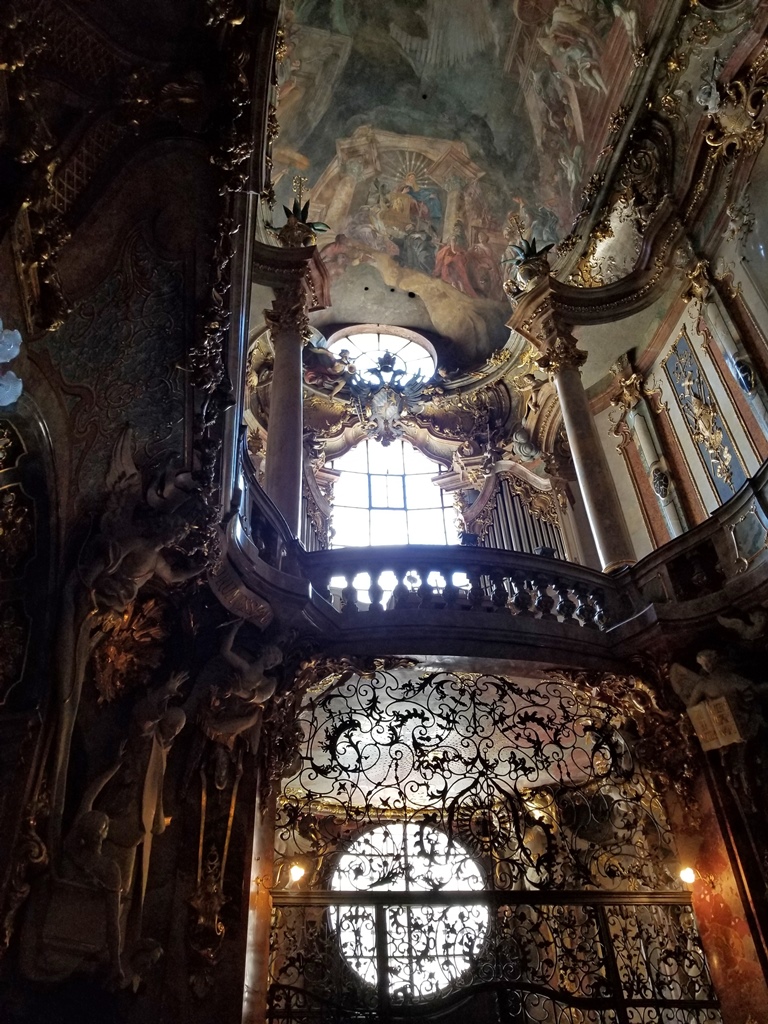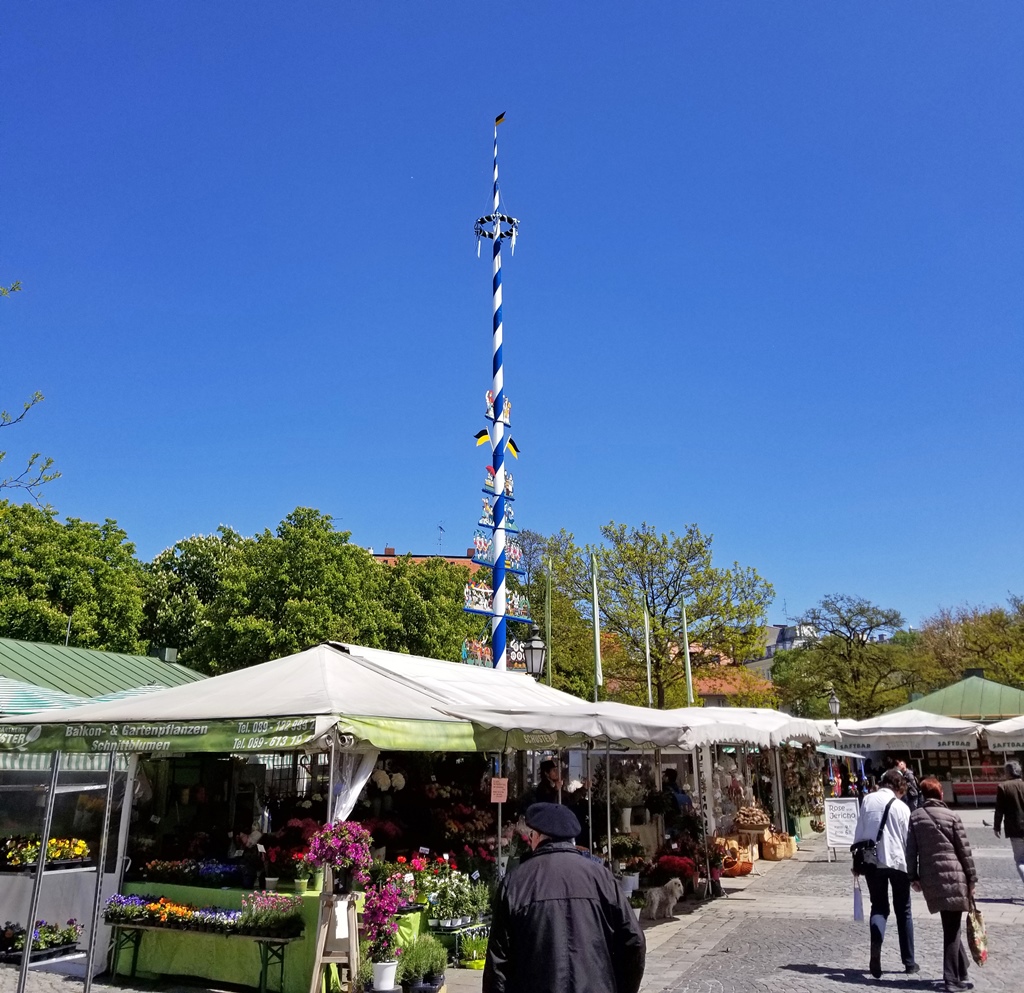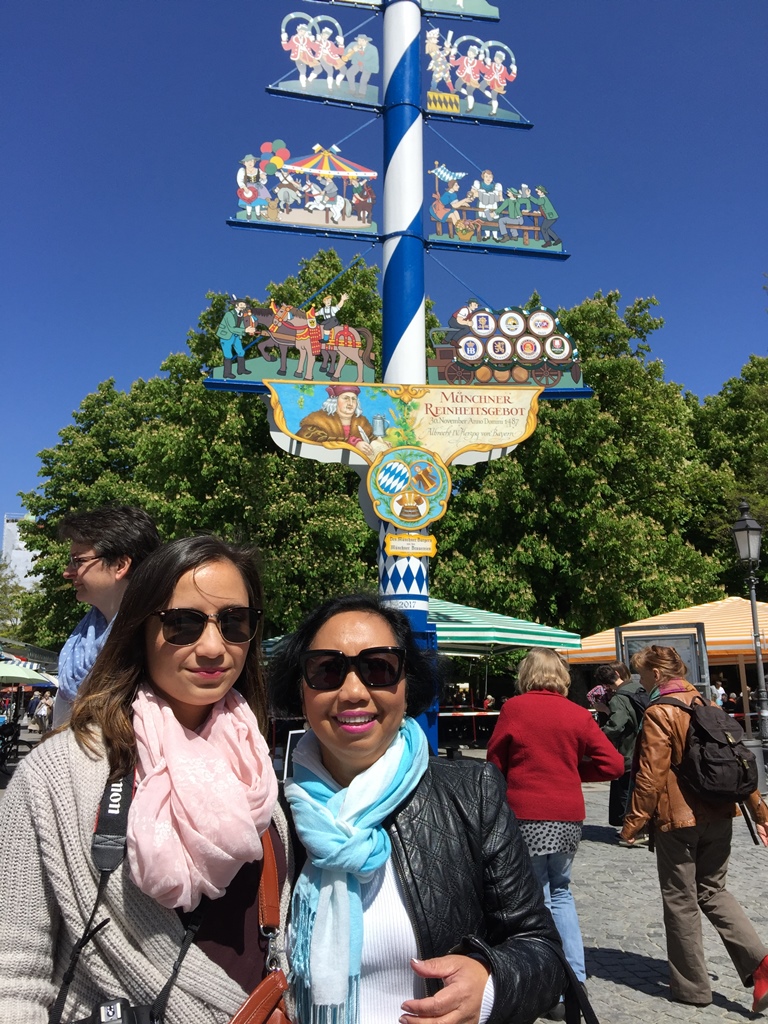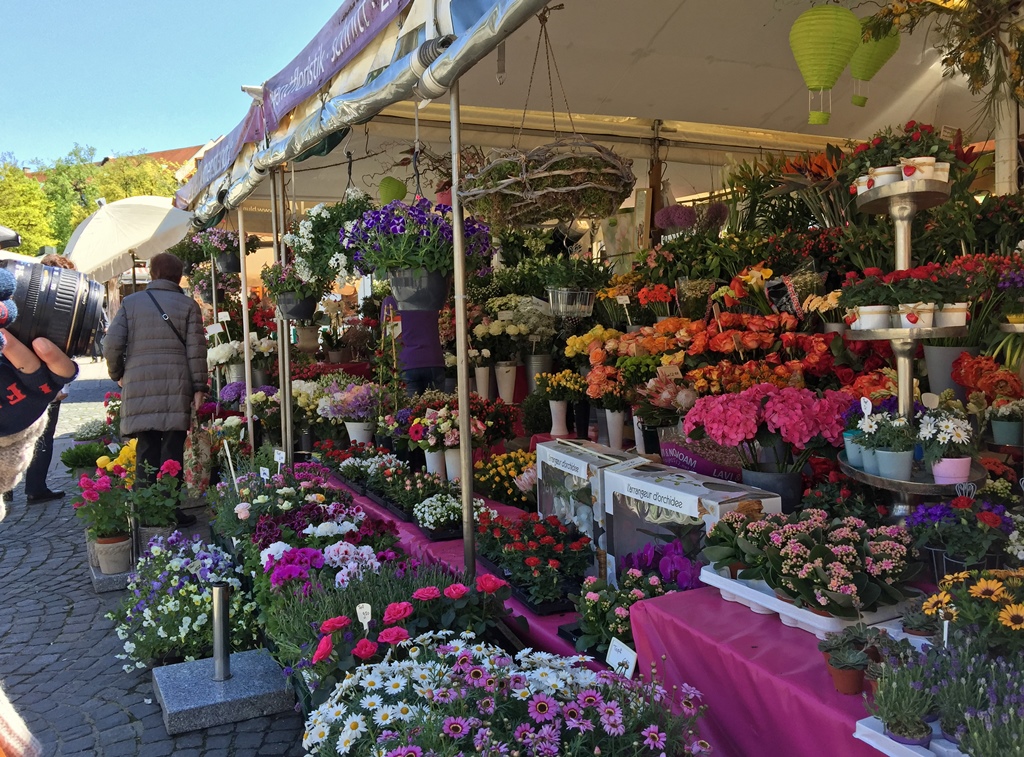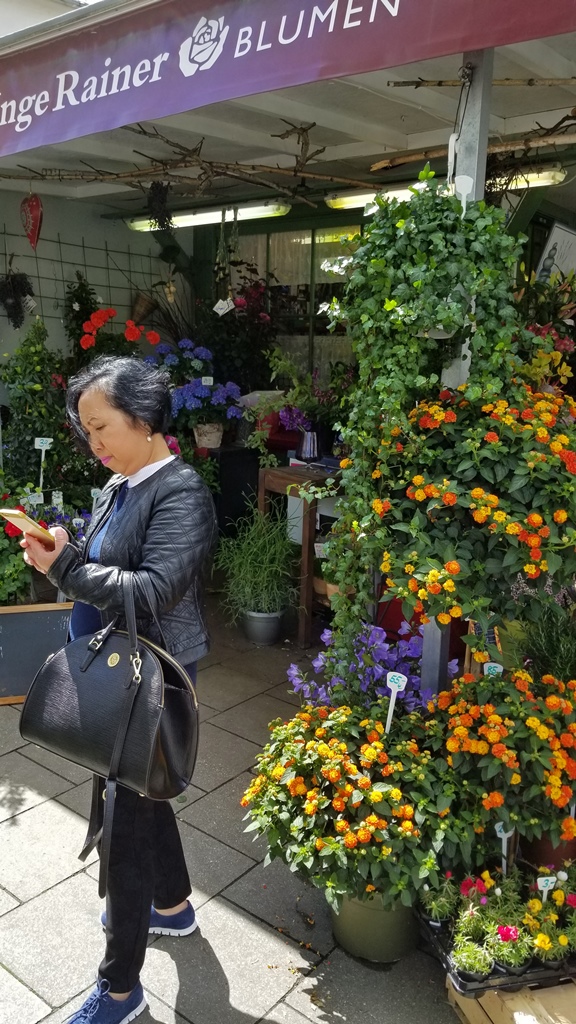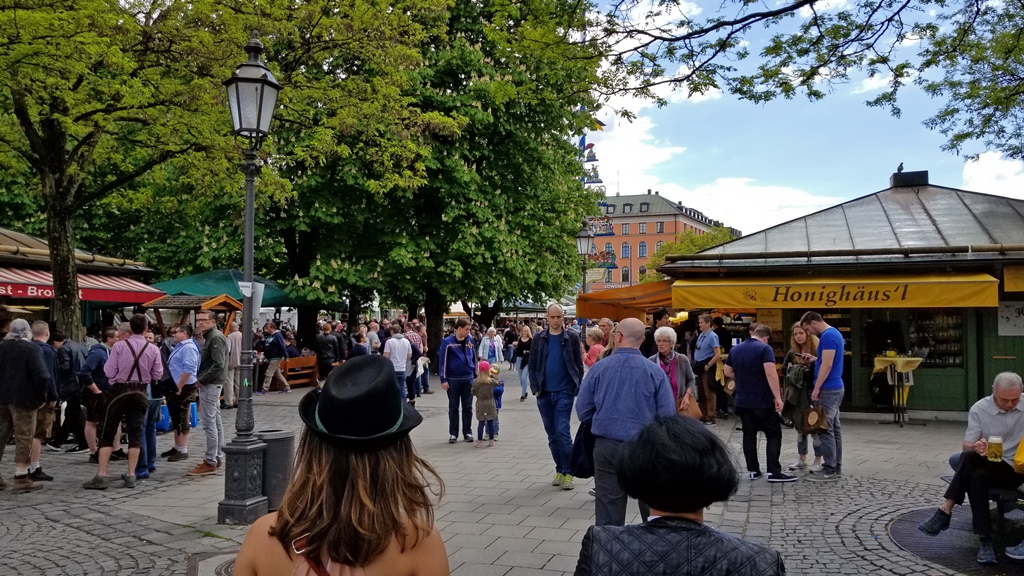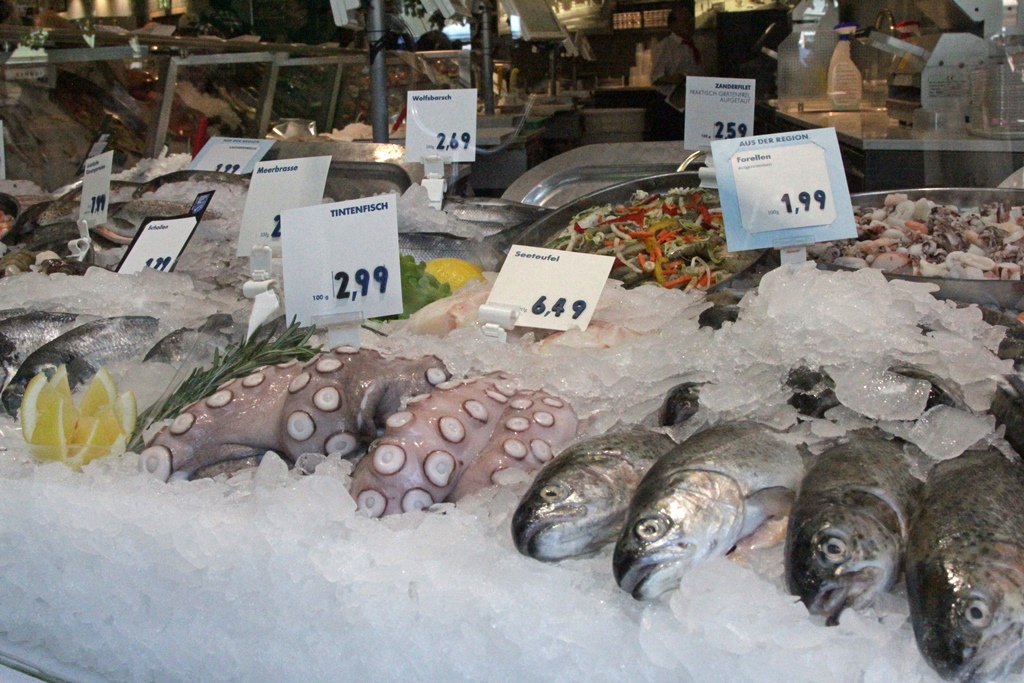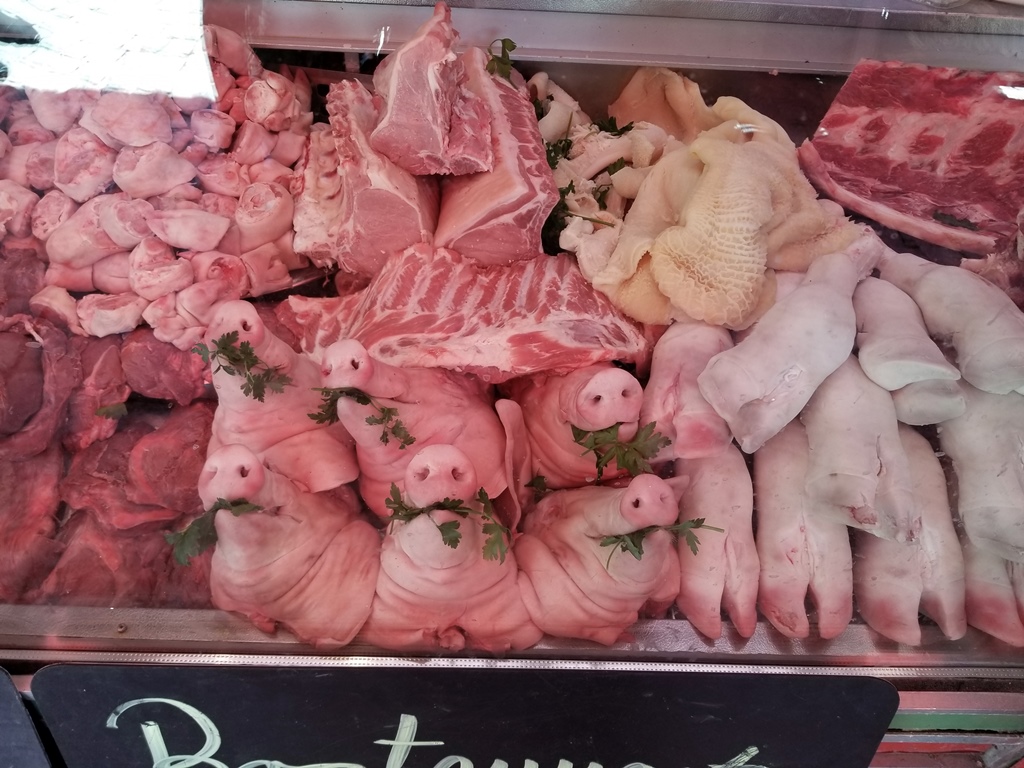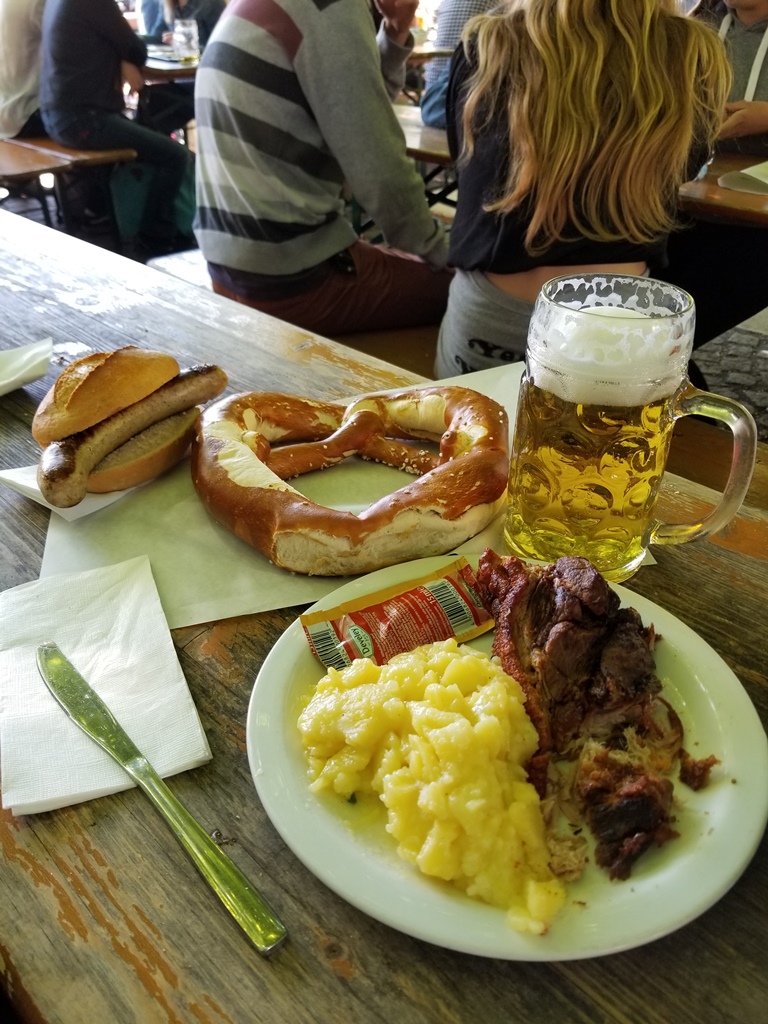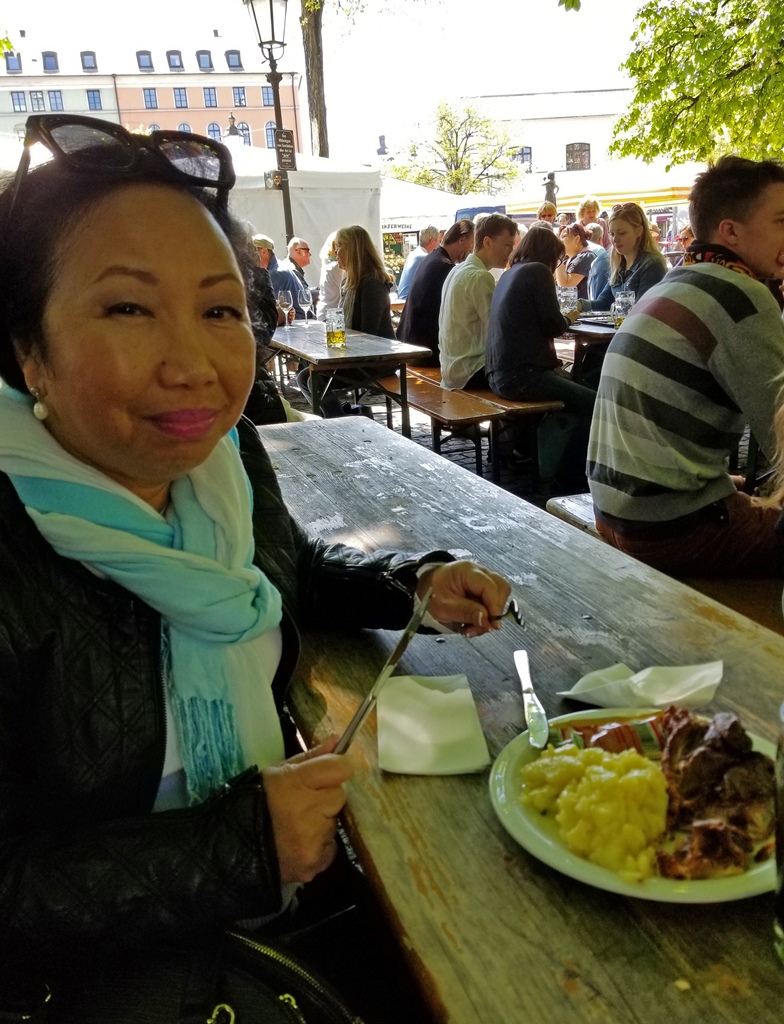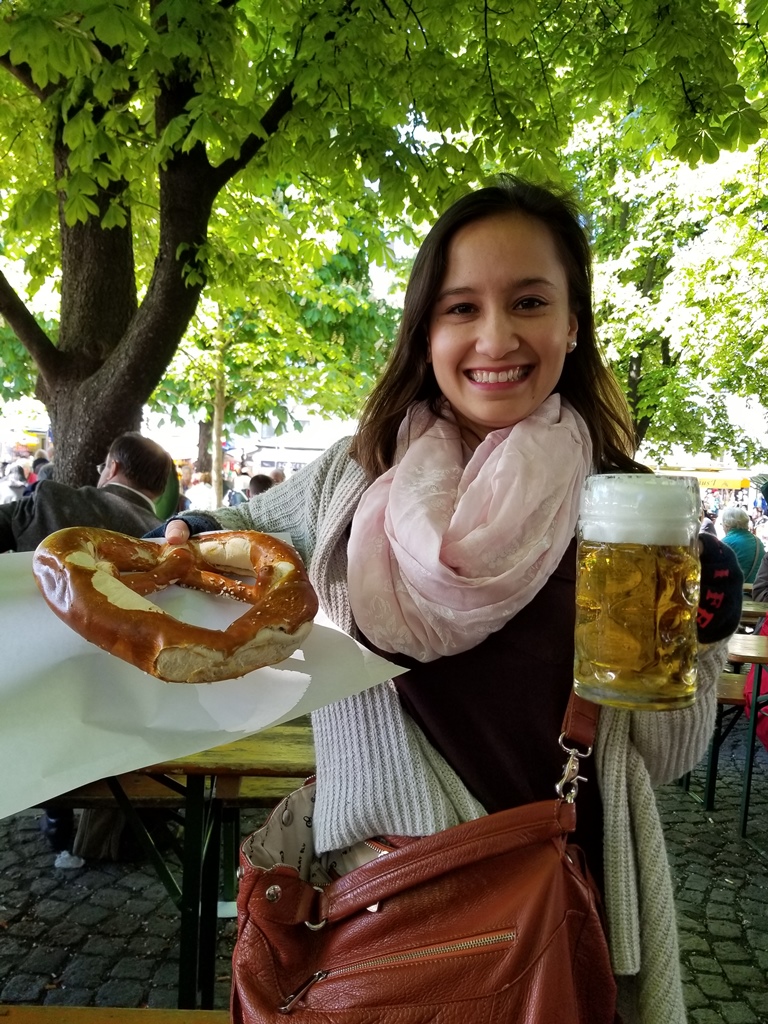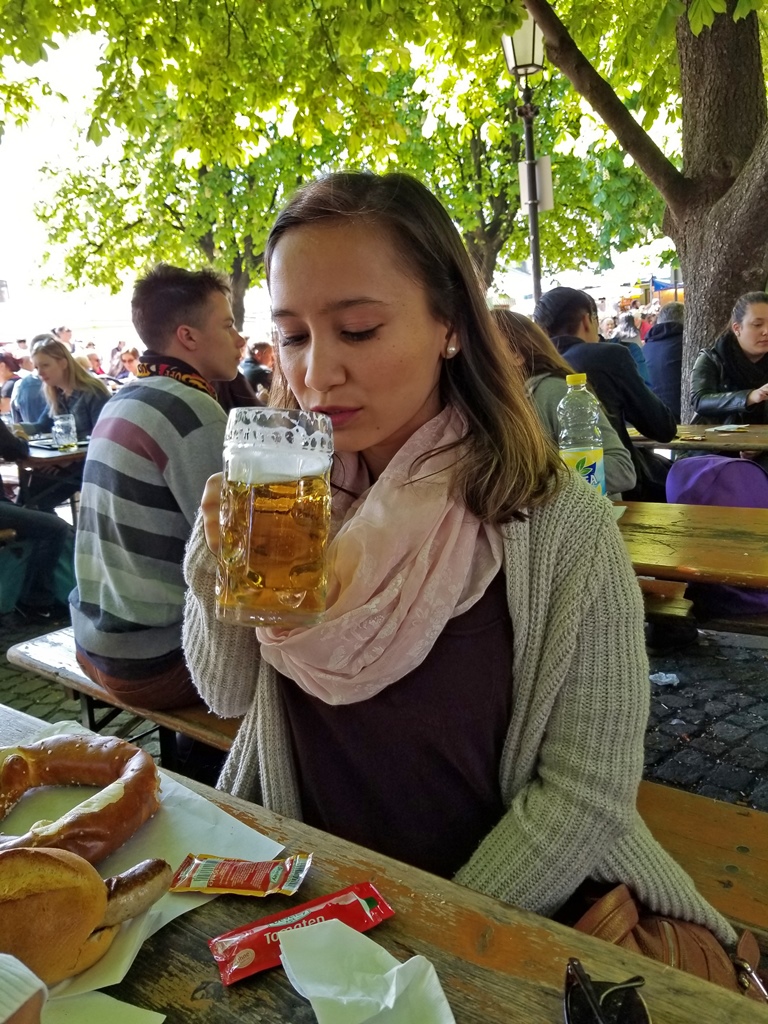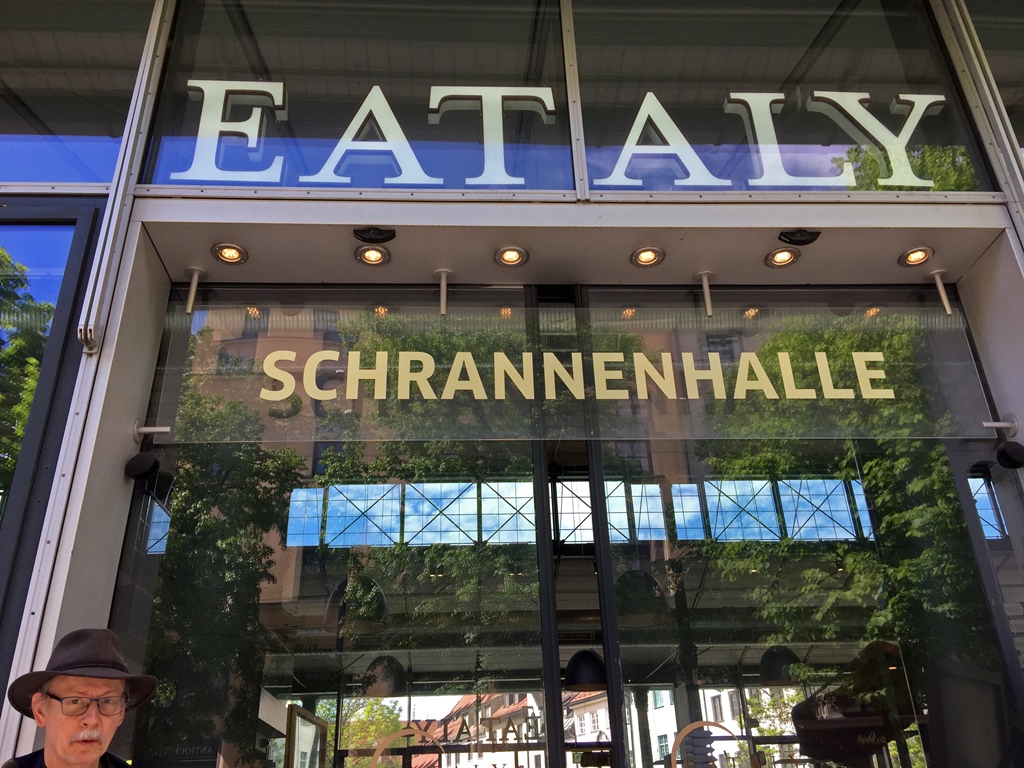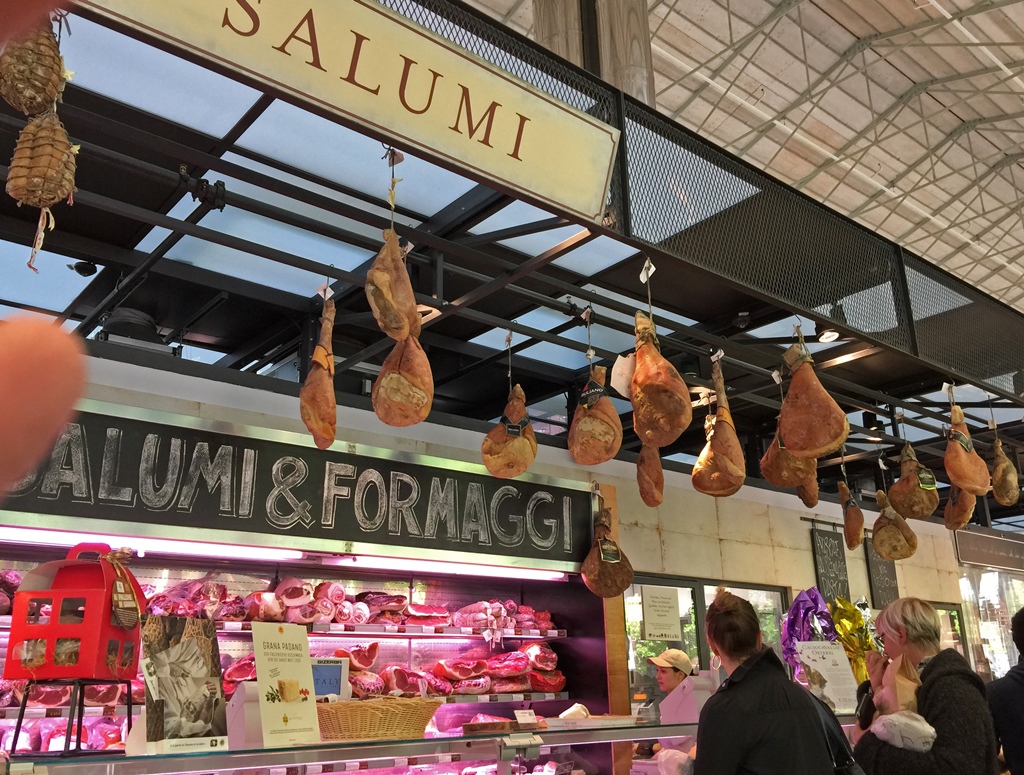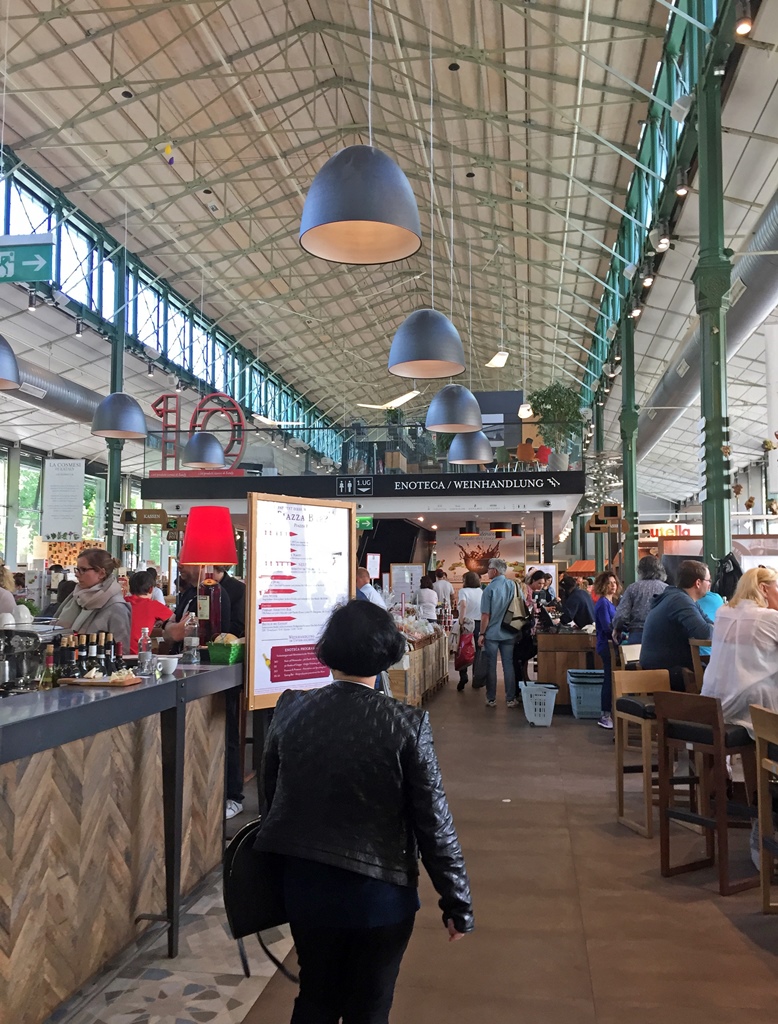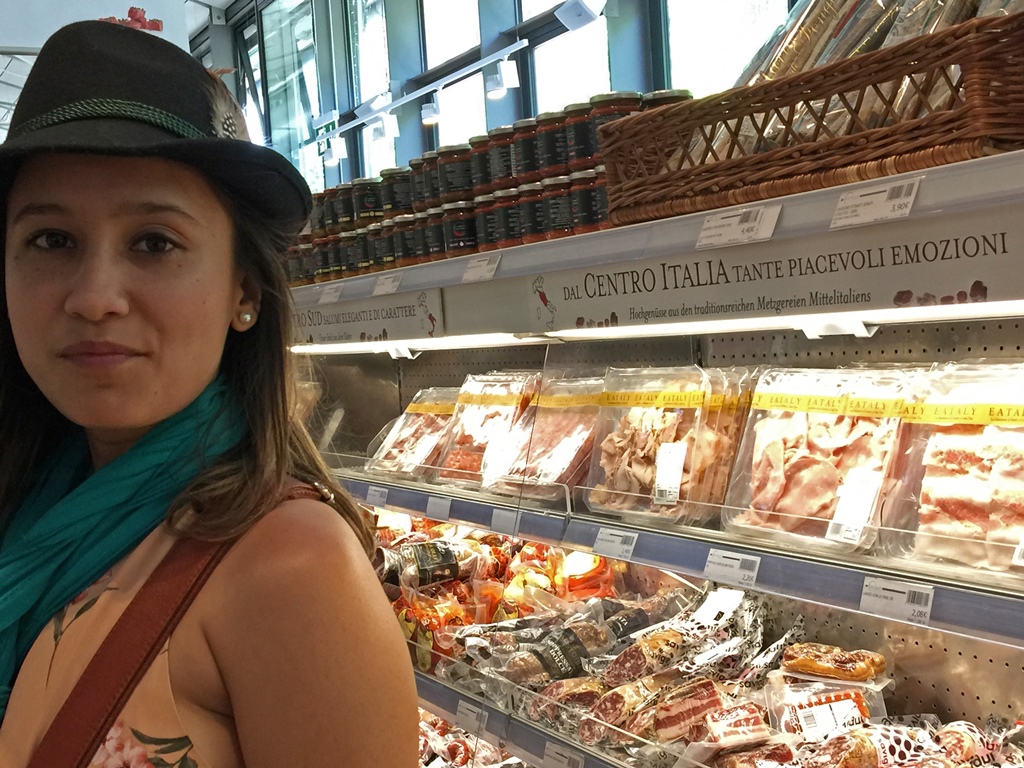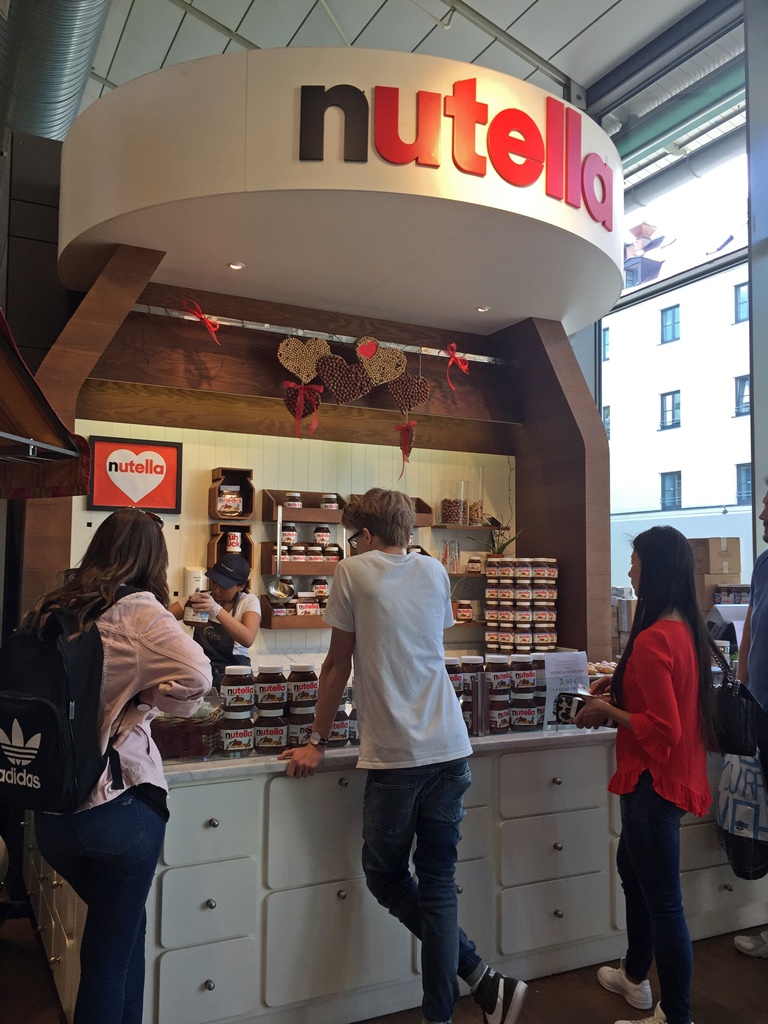Though the work paid well and the brothers were widely acclaimed, they found their labors somewhat
unsatisfying. They didn’t know why at first, but as time went on, the reason became apparent – they
were not able to act on many of the ideas they thought to be their best. Their patrons, who after all
paid the bills, were able to reject any ideas they found to be unsuitable for any reason, and they
frequently did so. One day during a discussion of this dilemma, Cosmas and Egid decided to build a
church for themselves, in which they could make all of the decisions. They had been saving a portion
of their earnings for several years and thought they might have enough to fund the task. But before
they could begin work, they needed to consult another professional.
Realtor: So you’re looking for a parcel in Munich on
which you can build this church of yours.
I’m sure we can come up with something.
What did you have in mind?
Cosmas: Kind of a medium-sized church, with angels,
saints, gargoyles, flying
buttresses – all of the usual things. And
there should be a square in front of the
church, from which passers-by can admire it.
Egid: We can call it Asamplatz!
Realtor: It sounds magnificent. What kind of
resources were you thinking of investing in
this project?
Cosmas: (proudly) We’ve saved up … 1,355
gnüdlstücks!
Realtor: Phthmpffft.
Cosmas: Are you all right?
Realtor: Apologies. A stifled guffaw.
Cosmas: Did I say something funny?
Realtor: Oh, yes! Do you have any idea what real
estate prices are like in central Munich?
And they’ve been going up! Have you
priced a dozen eggs lately?
Cosmas: I prefer weißwurst and beer. And one of
those big pretzels.
Realtor: For breakfast?
Egid: I like pizza.
Realtor: Uh … right. Maybe you could find a
property in a backwater like Bad
Schnitzelverkünft, but Munich…
Egid: What about the platz?
Realtor: I’m afraid not. Look, if you’re
determined to do Munich, maybe there’s
something, but you’ll have to scale it
down. Let’s see…
(Realtor produces a three-ring binder and
starts flipping through it)
Realtor: No, no, no, mmm … no, maybe but no, no,
ha-ha-ha no, … wait …
(The dejected Asams look up with something
like hope)
Realtor: Here’s ... something. But I can only
get you 72 feet.
Cosmas: That’s an awfully narrow church.
Realtor: That would be the length. The width
would be … 26 feet. It’s actually
more of a storefront.
Cosmas and Egid: (in unison) A storefront?
(The Asams are ready to explode in indignation,
but then they look at each other. And wheels start to
turn, and light bulbs which haven’t been invented yet
begin to glow…)
Cosmas: Maybe … this could work …
And the Asam brothers purchased the storefront, and ideas flowed upon ideas, and none of them
were rejected except the extra goofy ones, and the tiny church began to take shape with
construction ultimately extending from 1733 until 1746, when the church was finally completed.
And everyone lived happily ever after. Except for those who ran into misfortune. Like the realtor,
who couldn’t sell anything because everything had gotten too expensive, so he went out of business
and took up poaching. And everybody eventually died. The End.
At this point you might be wondering how much of this really happened. All of it! Except the
made-up parts. As there were no stenographers in the 18th Century, the dialog cannot be considered
exact, but is based on informed speculation. The brothers were apprenticed under their father Hans
(an artist in his own right) before receiving additional education and experience (including some
in Italy). The family portrait above might have to be considered questionable, as nothing about
its relationship to the Asams has been verified. But they do seem to be speaking German.
Additionally, the financial situation of Cosmas and Egid wasn’t quite as dire as implied, as Egid
already owned the property adjoining the future church at the time it was acquired. This
adjoining property was used as a private residence and was also decorated by the Asam brothers.
It’s now known as the Asamhaus (not a platz, but maybe the next-best thing).

